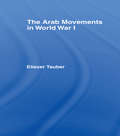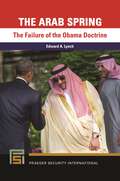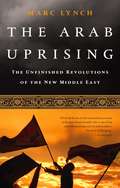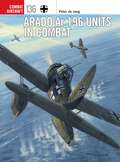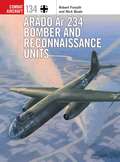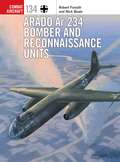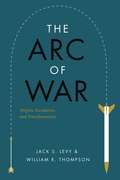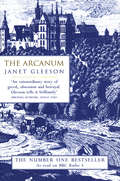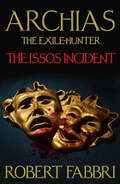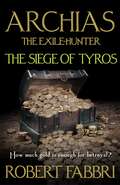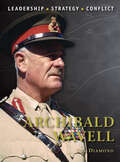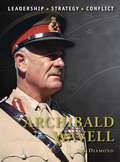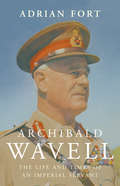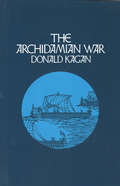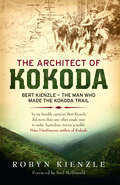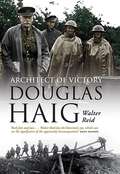- Table View
- List View
The Arab Movements in World War I
by Eliezer TauberThis study surveys the many revolutionary attempts carried out against the Ottoman Empire in the Fertile Cresecnt and the Arabian Peninsula during World War I. Special emphasis is laid upon the subversive activities of the Arab secret societies which preceded the outbreak of Sharif Husayn's Arab revolt in 1916. The revolt is thoroughly examined and analyzed, regarding both its military operations and its human composition, which influenced its course.
The Arab Spring: The Failure of the Obama Doctrine (Praeger Security International)
by Edward A. LynchThis title provides a succinct, readable, and comprehensive treatment of how the Obama administration reacted to what was arguably the most difficult foreign policy challenge of its eight years in office: the Arab Spring.As a prelude to examining how the United States reacted to the first wave of the Arab Spring in the 21st century, this book begins with an examination of how the U.S. reacted to revolution in the 19th and 20th centuries and a summary of how foreign policy is made. Each revolution in the Arab Spring (in Tunisia, Egypt, Libya, Syria, Bahrain, and Yemen) and the Obama administration's action—or inaction—in response is carefully analyzed. The U.S.' role is compared to that of regional powers, such as Turkey, Israel, and Iran. The impact of U.S. abdication in the face of pivotal events in the region is the subject of the book's conclusion.While other treatments have addressed how the Arab Spring revolutions have affected the individual countries where these revolutions took place, U.S. foreign policy toward the Middle East, and President Barack Obama's overall foreign policy, this is the only work that provides a comprehensive examination of both the Arab Spring revolutions themselves and the reaction of the U.S. government to those revolutions.
The Arab Spring: The Failure of the Obama Doctrine (Praeger Security International)
by Edward A. LynchThis title provides a succinct, readable, and comprehensive treatment of how the Obama administration reacted to what was arguably the most difficult foreign policy challenge of its eight years in office: the Arab Spring.As a prelude to examining how the United States reacted to the first wave of the Arab Spring in the 21st century, this book begins with an examination of how the U.S. reacted to revolution in the 19th and 20th centuries and a summary of how foreign policy is made. Each revolution in the Arab Spring (in Tunisia, Egypt, Libya, Syria, Bahrain, and Yemen) and the Obama administration's action—or inaction—in response is carefully analyzed. The U.S.' role is compared to that of regional powers, such as Turkey, Israel, and Iran. The impact of U.S. abdication in the face of pivotal events in the region is the subject of the book's conclusion.While other treatments have addressed how the Arab Spring revolutions have affected the individual countries where these revolutions took place, U.S. foreign policy toward the Middle East, and President Barack Obama's overall foreign policy, this is the only work that provides a comprehensive examination of both the Arab Spring revolutions themselves and the reaction of the U.S. government to those revolutions.
The Arab Uprising: The Unfinished Revolutions of the New Middle East
by Marc LynchBarely a year after the self-immolation of a young fruit seller in Tunisia, a vast wave of popular protest has convulsed the Middle East, overthrowing long-ruling dictators and transforming the region’s politics almost beyond recognition. But the biggest transformations of what has been labeled as the “Arab Spring” are yet to come.An insider to both American policy and the world of the Arab public, Marc Lynch shows that the fall of particular leaders is but the least of the changes that will emerge from months of unrest. The far-ranging implications of the rise of an interconnected and newly-empowered Arab populace have only begun to be felt. Young, frustrated Arabs now know that protest can work and that change is possible. They have lost their fear—meanwhile their leaders, desperate to survive, have heard the unprecedented message that killing their own people will no longer keep them in power. Even so, as Lynch reminds us, the last wave of region-wide protest in the 1950s and 1960s resulted not in democracy, but in brutal autocracy. Will the Arab world’s struggle for change succeed in building open societies? Will authoritarian regimes regain their grip, or will Islamist movements seize the initiative to impose a new kind of rule?The Arab Uprising follows these struggles from Tunisia and Egypt to the harsh battles of Yemen, Bahrain, Syria, and Libya and to the cautious reforms of the region’s monarchies. It examines the real meaning of the rise of Islamist movements in the emerging democracies, and the longterm hopes of a generation of activists confronted with the limits of their power. It points toward a striking change in the hierarchy of influence, as the old heavyweights—Iran, Al Qaeda, even Israel—have been all but left out while oil-rich powers like Saudi Arabia and “swing states” like Turkey and Qatar find new opportunities to spread their influence. And it reveals how America must adjust to the new realities. Deeply informed by inside access to the Obama administration’s decision-making process and first-hand interviews with protestors, politicians, diplomats, and journalists, The Arab Uprising highlights the new fault lines that are forming between forces of revolution and counter-revolution, and shows what it all means for the future of American policy. The result is an indispensible guide to the changing lay of the land in the Middle East and North Africa.
The Arab Uprising: The Unfinished Revolutions of the New Middle East
by Marc LynchBarely a year after the self-immolation of a young fruit seller in Tunisia, a vast wave of popular protest has convulsed the Middle East, overthrowing long-ruling dictators and transforming the region's politics almost beyond recognition. But the biggest transformations of what has been labeled as the "Arab Spring" are yet to come. An insider to both American policy and the world of the Arab public, Marc Lynch shows that the fall of particular leaders is but the least of the changes that will emerge from months of unrest. The far-ranging implications of the rise of an interconnected and newly-empowered Arab populace have only begun to be felt. Young, frustrated Arabs now know that protest can work and that change is possible. They have lost their fear -- meanwhile their leaders, desperate to survive, have heard the unprecedented message that killing their own people will no longer keep them in power. Even so, as Lynch reminds us, the last wave of region-wide protest in the 1950s and 1960s resulted not in democracy, but in brutal autocracy. Will the Arab world's struggle for change succeed in building open societies? Will authoritarian regimes regain their grip, or will Islamist movements seize the initiative to impose a new kind of rule?The Arab Uprising follows these struggles from Tunisia and Egypt to the harsh battles of Yemen, Bahrain, Syria, and Libya and to the cautious reforms of the region's monarchies. It examines the real meaning of the rise of Islamist movements in the emerging democracies, and the long-term hopes of a generation of activists confronted with the limits of their power. It points toward a striking change in the hierarchy of influence, as the old heavyweights -- Iran, Al Qaeda, even Israel -- have been all but left out while oil-rich powers like Saudi Arabia and "swing states" like Turkey and Qatar find new opportunities to spread their influence. And it reveals how America must adjust to the new realities. Deeply informed by inside access to the Obama administration's decision-making process and first-hand interviews with protestors, politicians, diplomats, and journalists, The Arab Uprising highlights the new fault lines that are forming between forces of revolution and counter-revolution, and shows what it all means for the future of American policy. The result is an indispensible guide to the changing lay of the land in the Middle East and North Africa.
Arado Ar 196 Units in Combat (Combat Aircraft)
by Peter de JongBeating its biplane rivals in a 1936 Reich Air Ministry design competition, the Arado Ar 196 provided the Kriegsmarine with possibly the best shipborne reconnaissance seaplane of World War II. Replacing the Heinkel He 60 biplane as the standard catapult-launched floatplane embarked on the Kriegsmarine's capital ships, the Ar 196 flew an assortment of combat missions during World War II, including coastal patrol, submarine hunting, light bombing, general reconnaissance and convoy escort sorties. The first vessel to take its Ar 196A-1s to sea was the pocket battleship Graf Spee, which embarked two in the autumn of 1939. The battleships Bismarck and Tirpitz could carry six Arados each, the battlecruisers Gneisenau and Scharnhorst four and smaller pocket battleships and cruisers two. Shore-based aircraft were also operated from coastal ports on the Channel, Baltic, North Sea and Bay of Biscay coasts, as well as in the Balkans and Mediterranean. In this title, supported by an excellent selection of photographs and full-colour illustrations, Peter de Jong explores the history of the Arado Ar 196, detailing their development and assessing the combat capabilities of one of the last fighting seaplanes.
Arado Ar 196 Units in Combat (Combat Aircraft #136)
by Peter de JongBeating its biplane rivals in a 1936 Reich Air Ministry design competition, the Arado Ar 196 provided the Kriegsmarine with possibly the best shipborne reconnaissance seaplane of World War II. Replacing the Heinkel He 60 biplane as the standard catapult-launched floatplane embarked on the Kriegsmarine's capital ships, the Ar 196 flew an assortment of combat missions during World War II, including coastal patrol, submarine hunting, light bombing, general reconnaissance and convoy escort sorties. The first vessel to take its Ar 196A-1s to sea was the pocket battleship Graf Spee, which embarked two in the autumn of 1939. The battleships Bismarck and Tirpitz could carry six Arados each, the battlecruisers Gneisenau and Scharnhorst four and smaller pocket battleships and cruisers two. Shore-based aircraft were also operated from coastal ports on the Channel, Baltic, North Sea and Bay of Biscay coasts, as well as in the Balkans and Mediterranean. In this title, supported by an excellent selection of photographs and full-colour illustrations, Peter de Jong explores the history of the Arado Ar 196, detailing their development and assessing the combat capabilities of one of the last fighting seaplanes.
Arado Ar 234 Bomber and Reconnaissance Units (Combat Aircraft)
by Robert Forsyth Nick BealeWhen the revolutionary twin jet-powered Arado Ar 234 first appeared in the skies over north-west Europe in the summer of 1944, it represented the state-of-the-art in terms of aeronautical and technical development. The Ar 234 was a formidable aircraft – powered by Jumo 004Bs, the same engine used by the Me 262, and with a maximum speed of 735 km/h and range of 1600 km/h, it was very difficult for the Allies to 'catch'. Here was a machine that with its superior speed could operate with impunity as both a bomber and in the reconnaissancerole. As such, the aircraft became the world's first reconnaissance jet, undertaking secret, high-speed, high-altitude observation missions for the German High Command over the Allied beachheads in Normandy and other Allied strongholds. Astonishingly, in September 1944 and as late as 1945, lone Ar 234s conducted reconnaissance flights over British ports and theMediterranean. The aircraft was equally efficient as a jet bomber – although the Ar 234B-2 bomber variant carried no defensive gun armament, it was able to deliver 1000 kg of bombs at high-speed and at either low- or high-level with considerable and devastating accuracy. This highly detailed title from renowned aviation historian Robert Forsyth explores the history of this incredible aircraft, from its development in the early 1940s to its deployment in both reconnaissance and bomber roles throughout the rest of the war. The masterful text is supported by stunning, specially commissioned artwork.
Arado Ar 234 Bomber and Reconnaissance Units (Combat Aircraft)
by Robert Forsyth Nick BealeWhen the revolutionary twin jet-powered Arado Ar 234 first appeared in the skies over north-west Europe in the summer of 1944, it represented the state-of-the-art in terms of aeronautical and technical development. The Ar 234 was a formidable aircraft – powered by Jumo 004Bs, the same engine used by the Me 262, and with a maximum speed of 735 km/h and range of 1600 km/h, it was very difficult for the Allies to 'catch'. Here was a machine that with its superior speed could operate with impunity as both a bomber and in the reconnaissancerole. As such, the aircraft became the world's first reconnaissance jet, undertaking secret, high-speed, high-altitude observation missions for the German High Command over the Allied beachheads in Normandy and other Allied strongholds. Astonishingly, in September 1944 and as late as 1945, lone Ar 234s conducted reconnaissance flights over British ports and theMediterranean. The aircraft was equally efficient as a jet bomber – although the Ar 234B-2 bomber variant carried no defensive gun armament, it was able to deliver 1000 kg of bombs at high-speed and at either low- or high-level with considerable and devastating accuracy. This highly detailed title from renowned aviation historian Robert Forsyth explores the history of this incredible aircraft, from its development in the early 1940s to its deployment in both reconnaissance and bomber roles throughout the rest of the war. The masterful text is supported by stunning, specially commissioned artwork.
Arbella: England's Lost Queen
by Sarah Gristwood'It is Arbella they would proclaim Queen if her mistress should happen to die' Sir William Stanley, 1592Niece to Mary, Queen of Scots, granddaughter to the great Tudor dynast Bess of Hardwick, Lady Arbella Stuart was brought up in the belief that she would inherit Elizabeth I's throne. Her very conception was dramatic: the result of an unsanctioned alliance that brought down the wrath of the authorities. Raised in restricted isolation at Hardwick, in the care - the 'custody' - of the forceful Bess, Arbella was twenty-seven before, in 1603, she made her own flamboyant bid for liberty. She may also have been making a bid for the throne. If so, she failed. But the accession of her cousin James thrust her into the colourful world of his court, and briefly gave her the independence she craved at the heart of Jacobean society.Then, aged thirty-five, Arbella risked everything to make her own forbidden marriage. An escape in disguise, a wild flight abroad and capture at sea led, in the end, to an agonizing death in the Tower in 1615. Along with the rumours about her sanity, her story influenced even Webster's The Duchess of Malfi. Yet perhaps nothing in her tale is as striking as the degree to which a woman so widely discussed in her own day has been written out of history. Nothing as remarkable as the almost modern freedom with which, in a series of extraordinary letters, Arbella Stuart revealed her own passionate and curiously accessible personality. Drawing on a wide variety of contemporary sources, Sarah Gristwood has painted a powerful and vivid portrait of a woman forced to carve a precarious path through the turbulent years when the Tudor gave way to the Stuart dynasty. But more remarkable still, the turmoils of Arbella's life never prevented her from claiming the right to love freely, to speak her wrongs loudly - and to control her own destiny.
The Arc of War: Origins, Escalation, and Transformation
by Jack S. Levy William R. ThompsonIn this far-reaching exploration of the evolution of warfare in human history, Jack S. Levy and William R. Thompson provide insight into the perennial questions of why and how humans fight. Beginning with the origins of warfare among foraging groups, The Arc of War draws on a wealth of empirical data to enhance our understanding of how war began and how it has changed over time. The authors point to the complex interaction of political economy, political and military organization, military technology, and the threat environment—all of which create changing incentives for states and other actors. They conclude that those actors that adapt survive, and those that do not are eliminated. In modern times, warfare between major powers has become exceedingly costly and therefore quite rare, while lesser powers are too weak to fight sustained and decisive wars or to prevent internal rebellions. Conceptually innovative and historically sweeping, The Arc of War represents a significant contribution to the existing literature on warfare.
The Arc of War: Origins, Escalation, and Transformation
by Jack S. Levy William R. ThompsonIn this far-reaching exploration of the evolution of warfare in human history, Jack S. Levy and William R. Thompson provide insight into the perennial questions of why and how humans fight. Beginning with the origins of warfare among foraging groups, The Arc of War draws on a wealth of empirical data to enhance our understanding of how war began and how it has changed over time. The authors point to the complex interaction of political economy, political and military organization, military technology, and the threat environment—all of which create changing incentives for states and other actors. They conclude that those actors that adapt survive, and those that do not are eliminated. In modern times, warfare between major powers has become exceedingly costly and therefore quite rare, while lesser powers are too weak to fight sustained and decisive wars or to prevent internal rebellions. Conceptually innovative and historically sweeping, The Arc of War represents a significant contribution to the existing literature on warfare.
The Arc of War: Origins, Escalation, and Transformation
by Jack S. Levy William R. ThompsonIn this far-reaching exploration of the evolution of warfare in human history, Jack S. Levy and William R. Thompson provide insight into the perennial questions of why and how humans fight. Beginning with the origins of warfare among foraging groups, The Arc of War draws on a wealth of empirical data to enhance our understanding of how war began and how it has changed over time. The authors point to the complex interaction of political economy, political and military organization, military technology, and the threat environment—all of which create changing incentives for states and other actors. They conclude that those actors that adapt survive, and those that do not are eliminated. In modern times, warfare between major powers has become exceedingly costly and therefore quite rare, while lesser powers are too weak to fight sustained and decisive wars or to prevent internal rebellions. Conceptually innovative and historically sweeping, The Arc of War represents a significant contribution to the existing literature on warfare.
The Arc of War: Origins, Escalation, and Transformation
by Jack S. Levy William R. ThompsonIn this far-reaching exploration of the evolution of warfare in human history, Jack S. Levy and William R. Thompson provide insight into the perennial questions of why and how humans fight. Beginning with the origins of warfare among foraging groups, The Arc of War draws on a wealth of empirical data to enhance our understanding of how war began and how it has changed over time. The authors point to the complex interaction of political economy, political and military organization, military technology, and the threat environment—all of which create changing incentives for states and other actors. They conclude that those actors that adapt survive, and those that do not are eliminated. In modern times, warfare between major powers has become exceedingly costly and therefore quite rare, while lesser powers are too weak to fight sustained and decisive wars or to prevent internal rebellions. Conceptually innovative and historically sweeping, The Arc of War represents a significant contribution to the existing literature on warfare.
The Arc of War: Origins, Escalation, and Transformation
by Jack S. Levy William R. ThompsonIn this far-reaching exploration of the evolution of warfare in human history, Jack S. Levy and William R. Thompson provide insight into the perennial questions of why and how humans fight. Beginning with the origins of warfare among foraging groups, The Arc of War draws on a wealth of empirical data to enhance our understanding of how war began and how it has changed over time. The authors point to the complex interaction of political economy, political and military organization, military technology, and the threat environment—all of which create changing incentives for states and other actors. They conclude that those actors that adapt survive, and those that do not are eliminated. In modern times, warfare between major powers has become exceedingly costly and therefore quite rare, while lesser powers are too weak to fight sustained and decisive wars or to prevent internal rebellions. Conceptually innovative and historically sweeping, The Arc of War represents a significant contribution to the existing literature on warfare.
The Arc of War: Origins, Escalation, and Transformation
by Jack S. Levy William R. ThompsonIn this far-reaching exploration of the evolution of warfare in human history, Jack S. Levy and William R. Thompson provide insight into the perennial questions of why and how humans fight. Beginning with the origins of warfare among foraging groups, The Arc of War draws on a wealth of empirical data to enhance our understanding of how war began and how it has changed over time. The authors point to the complex interaction of political economy, political and military organization, military technology, and the threat environment—all of which create changing incentives for states and other actors. They conclude that those actors that adapt survive, and those that do not are eliminated. In modern times, warfare between major powers has become exceedingly costly and therefore quite rare, while lesser powers are too weak to fight sustained and decisive wars or to prevent internal rebellions. Conceptually innovative and historically sweeping, The Arc of War represents a significant contribution to the existing literature on warfare.
The Arcanum: The Extraordinary True Story Of The Invention Of European Porcelain
by Janet GleesonImprisoned in a fairy-tale castle and under constant threat of execution by his ruthless captor an 18th century apothecary struggled to realize the alchemist's dream. His name was Johann Frederick Bottger. But instead of transforming base metal into gold he was to discover the formula for something even more exotic and elusive, a substance so precious it was known as 'white gold'. And it was a formula for which others were prepared to lie, cheat, steal and even kill to possess.This was the remarkable backdrop to one of the most strange and compelling episodes in European cultural and scientific history; a tale of genius and greed, of demonic cruelty and exquisite beauty, of the best and worst of which man is capable - it is the true story of the invention of European porcelain.
Archias the Exile-Hunter: The Issos Incident. An Alexander’s Legacy novella. (Alexander's Legacy)
by Robert FabbriAn Archias the Exile-Hunter short storyArchias, struggling actor, quick on his feet and even faster with his words, is at the end of his luck. Having escaped to Rhosos, on the edge of Macedon's territory, to evade the threat of the debt collectors, he has been prevented from going any further by the arrival of Alexander the Great's mighty army. And with it, those very same debt collectors. So when the chance is given to him to earn enough money to be rid of his pursuers forever, he has to take it. Even if it means risking life and limb by attempting the most crazy of rescues - to bring back a kidnapped boy from inside the camp of Darius, King of Kings of the crumbling Persian empire. A camp that is on the eve of battle... As Alexander's troops draw nearer, and Darius's cavalry begin their war-cry, can Archias save himself, the boy, and his fellow rescuers, before it's too late?
Archias the Exile-Hunter - The Siege of Tyros. An Alexander's Legacy novella: The Issos Incident. An Alexander's Legacy Novella (Alexander's Legacy Ser.)
by Robert FabbriArchias the Exile-Hunter: The Siege of TyrosArchias, struggling actor turned assassin, is finally out of luck. Alexander the Great has been informed of Archias' latest victim's death, and that it was his gold that was used to pay for the murder. Locked up awaiting Alexander's judgement, Archias believes his days are numbered.Instead, Alexander gives him a new mission: infiltrate the island city of Tyros, currently under siege, kill the soldiers who are delaying Macedon's victory, and hold the King of Tyros captive until Alexander arrives. But Alexander makes no mention of Archias' fate, should he succeed in this almost impossible task - a task more like a suicide mission in fact. Can Archias win through, and make it out alive?
Archibald Wavell (Command #28)
by Jon DiamondArchibald Wavell remains one of the great Allied commanders of the early phases of World War II. In fact, between June 1940 and June 1941, he was the only British theatre commander actively engaging Axis forces. At a time when the British Expeditionary Force had been expelled from Europe, Wavell was conducting campaigns across nine countries and two continents. In those 12 months, he planned and directly oversaw a multitude of campaigns, from the hugely successful winter campaigns against the Italians in the Western Desert and the conquest of Italian East Africa, through the Iraqi revolt, the invasion of Vichy Syria and Lebanon and the ill-fated British involvement in Greece, to the unsuccessful attempts to break the siege of Tobruk that led to his replacement in June 1941. While Wavell's great victories are often overshadowed by those of other commanders later in the war, this should not detract from his proven abilities as a strategist and tactician. This book tells the complete story of Wavell's wartime exploits and examines his strengths and weaknesses as a commander.
Archibald Wavell (Command)
by Jon Diamond Peter DennisArchibald Wavell remains one of the great Allied commanders of the early phases of World War II. In fact, between June 1940 and June 1941, he was the only British theatre commander actively engaging Axis forces. At a time when the British Expeditionary Force had been expelled from Europe, Wavell was conducting campaigns across nine countries and two continents. In those 12 months, he planned and directly oversaw a multitude of campaigns, from the hugely successful winter campaigns against the Italians in the Western Desert and the conquest of Italian East Africa, through the Iraqi revolt, the invasion of Vichy Syria and Lebanon and the ill-fated British involvement in Greece, to the unsuccessful attempts to break the siege of Tobruk that led to his replacement in June 1941. While Wavell's great victories are often overshadowed by those of other commanders later in the war, this should not detract from his proven abilities as a strategist and tactician. This book tells the complete story of Wavell's wartime exploits and examines his strengths and weaknesses as a commander.
Archibald Wavell: The Life and Times of an Imperial Servant
by Adrian FortArchibald Wavell was born a few years before Queen Victoria's Golden Jubilee and died shortly after the end of the Second World War (1883-1950). During that time the country in which he was born and brought up in changed beyond recognition, undergoing a fundamental revision in the attitudes, expectations, prejudices and hopes of the British people. His life epitomises that of a generation of famous men whose education and upbringing equipped them for a future that was to prove an illusion.At seventeen, Archibald Wavell joined the army and as a young officer saw action in the Boer War and on the North West Frontier.In the Great War, he was often close to the greatest generals in the British Army; he fought in the trenches, was decorated for bravery and lost an eye. Between the wars his career included command of troops attempting to keep the peace in Palestine as revolt engulfed the country. His victorious campaigns early in the Second World War attracted a blaze of public admiration and renown; but he also tasted defeat and rejection, both in Africa and from 1941 as commander-in-chief of Allied forces in India, wilting before the Japanese onslaught in Burma and Singapore. In 1943 he was appointed Viceroy of India, where he took on the task of guiding that country's destiny as it crossed the brink of Empire into the turmoil of independence.
The Archidamian War
by Donald KaganThis book, the second volume in Donald Kagan's tetralogy about the Peloponnesian War, is a provocative and tightly argued history of the first ten years of the war. Taking a chronological approach that allows him to present at each stage the choices that were open to both sides in the conflict, Kagan focuses on political, economic, diplomatic, and military developments. He evaluates the strategies used by both sides and reconsiders the roles played by several key individuals.
The Architect of Kokoda: Bert Kienzle - the man who made the Kokoda track (Hachette Military Collec Ser.)
by Robyn KienzleIn my humble opinion, Bert Kienzle did more than any other single man to make Australian victory possible.' Peter FitzSimons, author of KokodaIn 1942, when the Japanese had invaded Papua New Guinea and the Australian soldiers sent to hold them back thought victory was impossible, one man, Bert Kienzle, changed the course of history.This charismatic man, well known in Papua for having run gold mines and plantations there, was charged with the seemingly impossible task of establishing a trail across the forbidding Owen Stanley Range in just a few short months.Out of jungle and mud, Kienzle carved a working transport route that his handpicked teams of native bearers, the now famous Fuzzy Wuzzy Angels, would work on alongside the Australian troops ensuring that the men got the food, munitions and medical support they needed. The feats that these men performed were heroic, and their endurance as they transported supplies along the Trail unparalleled. Bert Kienzle lived an amazing life and the transport route he established – the legendary Kokoda Trail – made Australia’s victory possible.This is his story.
Architect of Victory: Douglas Haig
by Walter ReidA thoughtful reassessment' - Stand To! 'Sharp and clear...swift and surefooted' - The Scotsman 'A careful biographer' - Times Literary Supplement 'Those new to the Haig debate will receive a good introduction. Those already familiar with the subject matter will enjoy Reid's writing style and reflective moments' - The British Army Review 'An outstanding success. The argument is beautifully presented and written in very clear English. This is a substantial work which follows the rules of classical biography' - Politique étrangère Douglas Haig's popular image as an unimaginative butcher is unenviable and unmerited. In fact, he masterminded a British-led victory over a continental opponent on a scale that has never been matched before or since. Contrary to myth, Haig was not a cavalry-obsessed, blinkered conservative, as satirised in Oh! What a Lovely War and Blackadder Goes Forth. Fascinated by technology, he pressed for the use of tanks, enthusiastically embraced air power, and encouraged the use of new techniques involving artillery and machine-guns. Above all, he presided over a change in infantry tactics from almost total reliance on the rifle towards all-arms, multi-weapons techniques that formed the basis of British army tactics until the 1970s. Prior re-evaluations of Haig's achievements have largely been limited to monographs and specialist writings. Walter Reid has written the first biography of Haig that takes into account modern military scholarship, giving a more rounded picture of the private man than has previously been available. What emerges is a picture of a comprehensible human being, not necessarily particularly likeable, but honourably ambitious, able and intelligent, and the man more than any other responsible for delivering victory in 1918.
